If you think about it, pirates have a lot in common with Italians. People who don’t really know anything about either will quickly resort to stereotypical ideas from pop culture, which is usually really embarrassing for the person in question. That’s a bit of a problem when reviewing pirate-related games or media in general. In historical gaming I always had the impression that people are more forgiving for this sort of stuff, despite going red in the face over the wrong color of facing on their preferred shako-wearing troops. It’s easy to see why. Ever since the golden age of piracy there has been a fascination for these larger than life figures. The publication of “A General History of the Pyrates” in 1724 celebrated them and gave them an undeserved favorable spotlight in the public. Like the dime novels published about the exploits of outlaws in the wild west, this gave them an image of heroics and honor, despite paradoxically being infamous for murder, torture, and savage acts of violence. People through the ages simply love that stuff, so we’ve been programmed with a pirate-shaped hole in our brains for hundreds of years.
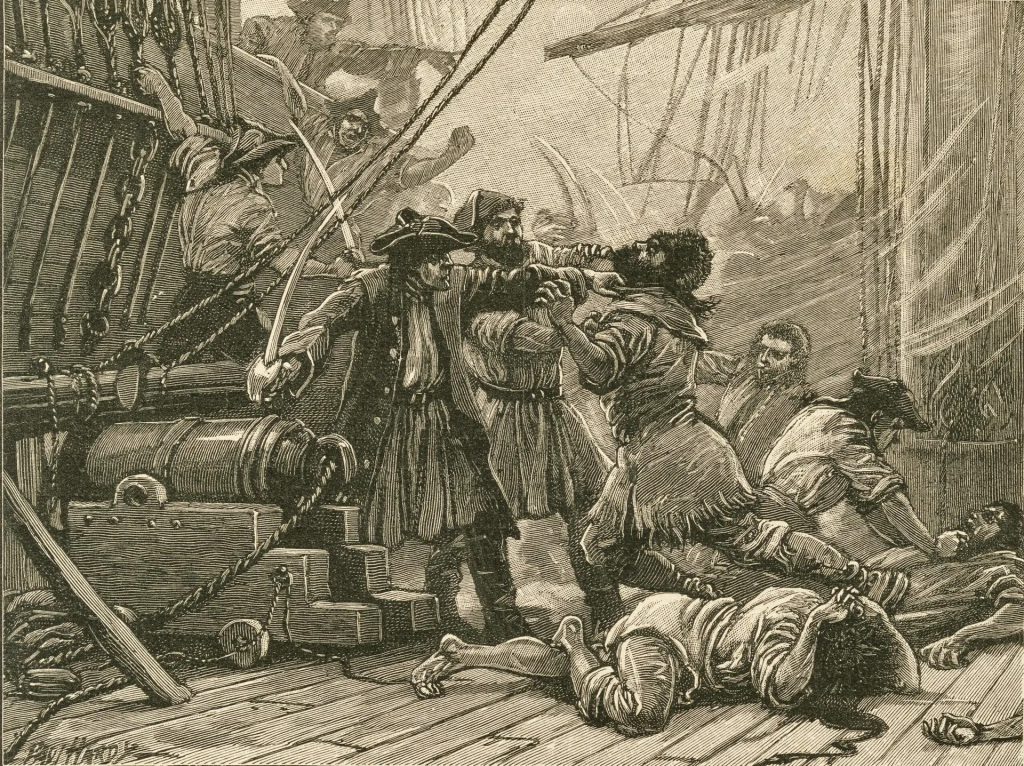
Having never actually played Blood & Plunder before, or having read the rulebook, I was not really sure which way the system would swing. But the people at Firelock Games are firmly on the boat that sails the seas of historical wargaming. The first 20 pages of the “Raise The Black” rulebook give an in-depth timeline of the different players, battles and actions from 1655 to 1718. With three historical writers and consultants on the team, this is an excellent primer to dive into a fascinating period of history, and as is usual, history doesn’t need any fabrications to seem fantastical. The theme of this box is the legendary last fight between the notorious Blackbeard, or Edward Teach (or Thatch, you can choose your spelling) and Lieutenant Robert Maynard, tasked with hunting him and tracking him down on the coast of North Carolina, with two crewed sloops, “Jane” and “Ranger”. Teach was commanding the sloop “Adventure” himself, after abandoning his flagship the “Queen Anne’s Revenge”, and eventually ended up as a head tied to the bowsprit of the “Jane” having succumbed to 5 gunshots and twenty cuts. The fearful pirate, known for putting lit slow burning matches under his hat and in his beard, was finally dead. There’s a bit more to the story than I can do justice in this article, but it’s a good theme that perfectly fits the small ships and big names associated with piracy.
We will get to a decent in-depth review of the rules and factions later, because this is a mere unboxing. Rest assured that the rules are very much worth it, and give you as a gamer the option to do full sea battles, skirmishes on land, as well as a combination of the two that isn’t boring or particularly clunky. But there’s a lot of content to cover in this box alone!
I cannot stress enough that the box is an absolute unit, the biggest I’ve seen to date.
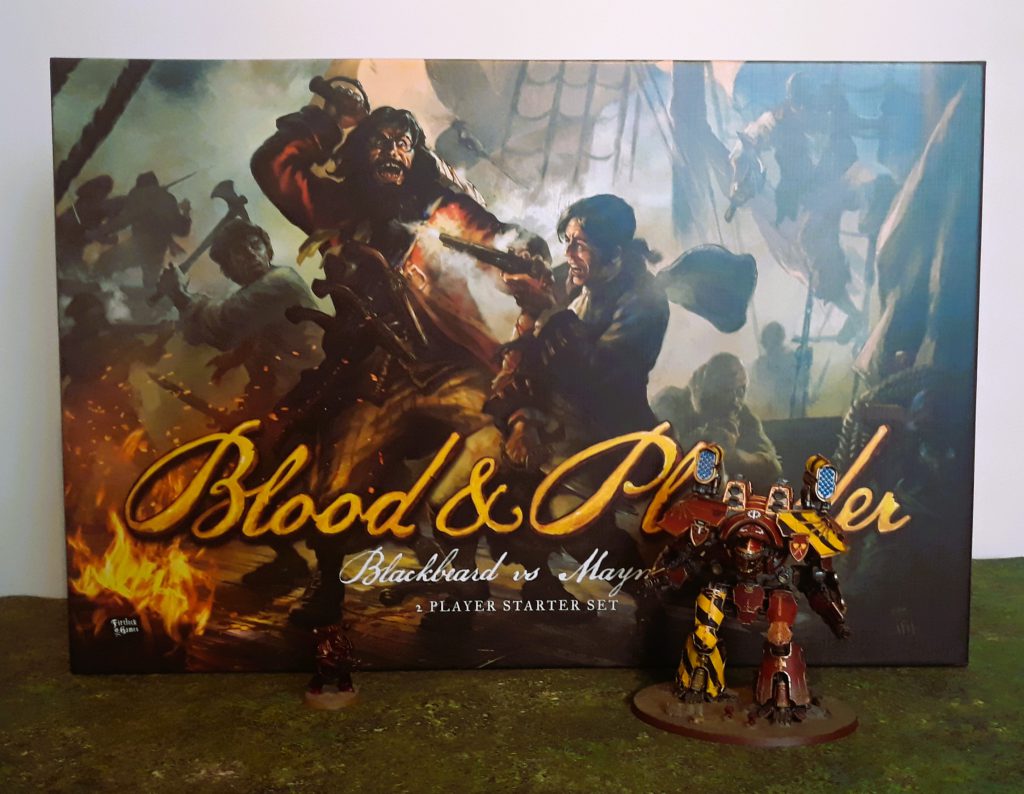
Opening the box, you’re greeted with some smaller boxes, which could theoretically also be unboxed. Digging out the precious contents, you’ll find the following;
- Two sloops, which you can build as either a classic sloop or Bermuda variant
- Included with these are two sprues with light ship cannons, swivel guns, gun port covers and other bits and bobs
- Two sets of the new plastic sailor models, 24 models in total
- A plastic Maynard and Blackbeard miniature
- A softback 159-page Raise the Black ruleset
- Some nice D10 dice
- A set of tokens to track various effects during the game, as well as some templates to move your ships
- Ship cards
- A rather nice and handy 4×3 FT double-sided sea/land mat
- Some 2D scenery, also double-sided and made from the same sturdy cardboard as the tokens, to add cover to your land battles or reefs to your sea
- A measuring tool
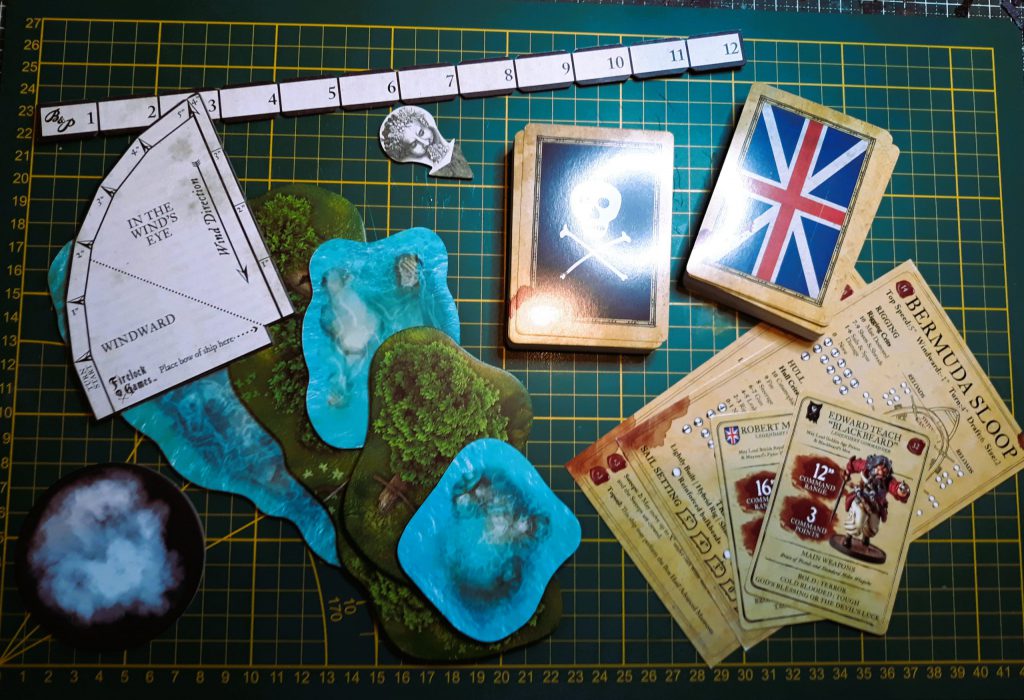
Let’s look a bit deeper into the various components and how to build and maybe paint them.
Boat, ship, sloop, camera, TV, person
One of the main attractions of this starter is of course the ships! You can call them boats as well if you like, the people who can argue about this are literally at sea anyway. The first of the range of plastic ships from Firelock, they’ll be easier to work with for most people than resin. The downside is you don’t have a chunk of resin to conk your opponent over the head with when the eyepatches and plastic hook-for-hands come out. The quality is excellent. There are some mold lines, but these are easy to remove and don’t appear on difficult to reach spots. There was a slight bit of warping on the deck of one of the sloops, but since it is a huge flat thin plastic surface, that can be expected, and I had no trouble gluing it in place and it isn’t noticeable on the finished model.
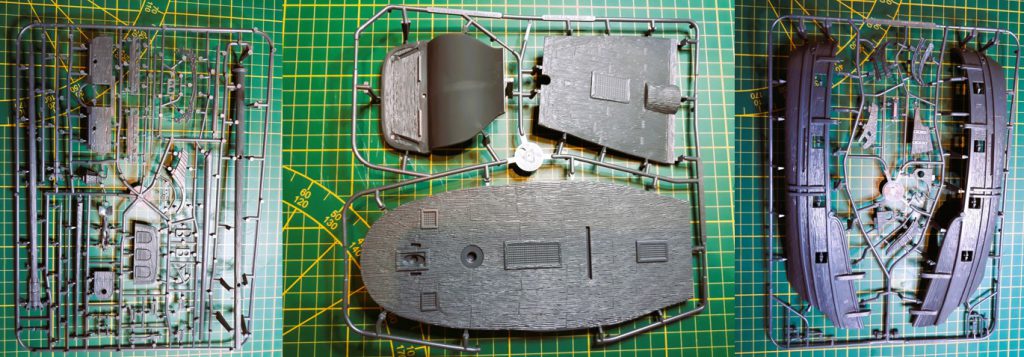
The sprues come in some nice black cardboard boxes, and getting two of these is probably the main reason the box is large enough to hold a ton of space marines, by way of comparison. The way the whole package is presented is really nice, and the fact sprues aren’t casually tossed into a cardboard box speaks to the care Firelock put into the production. There’s a handy guide included for constructing the models, but apart from the arm configurations for the sailors it’s pretty easy to figure out. What you won’t get in the box is rigging material or some sort of sail, we’ll get to that in a bit.
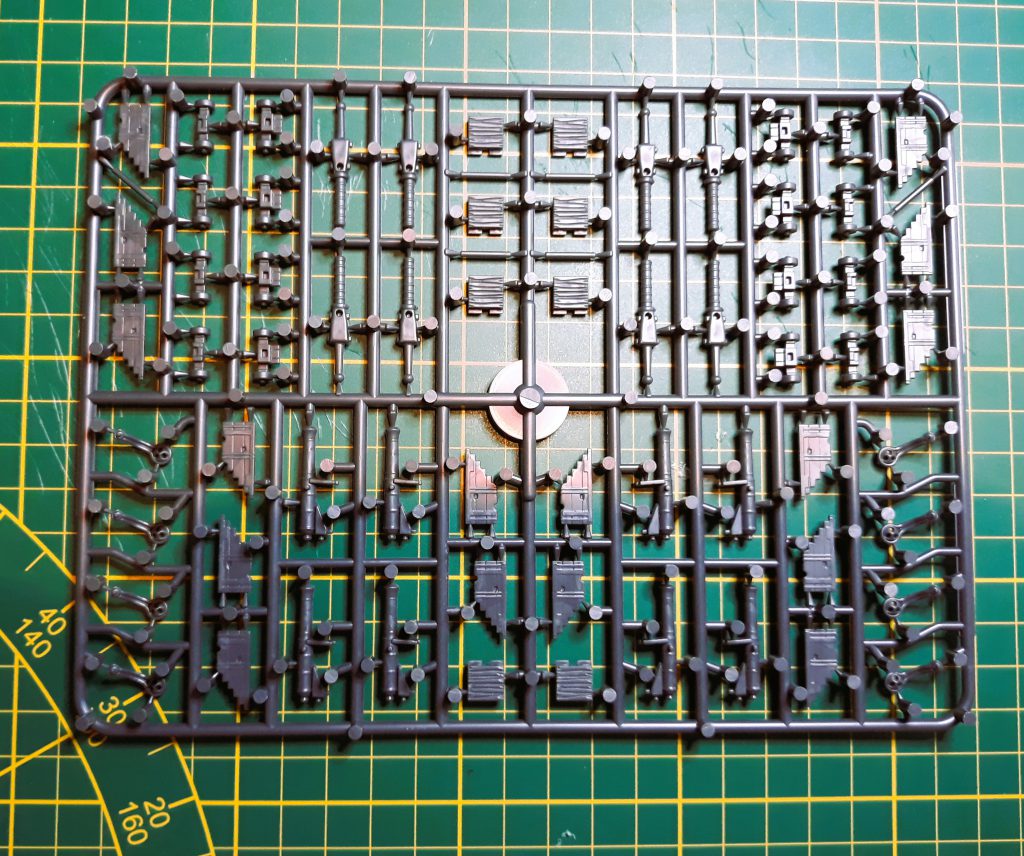
For the build I wanted to differentiate a bit between the two sloops, and apart from building one as a Bermuda variant I switched up the bowsprit and stern decorations a bit. You get enough parts to personalize these, or can easily cut up some of the bits to truly make these your own. For gluing the keel parts and deck together I recommend some rubber bands, as some parts won’t go together without using some light pressure (have these handy so you won’t have to hunt for them after you’ve applied glue. Finding them will take hours usually if you need them).
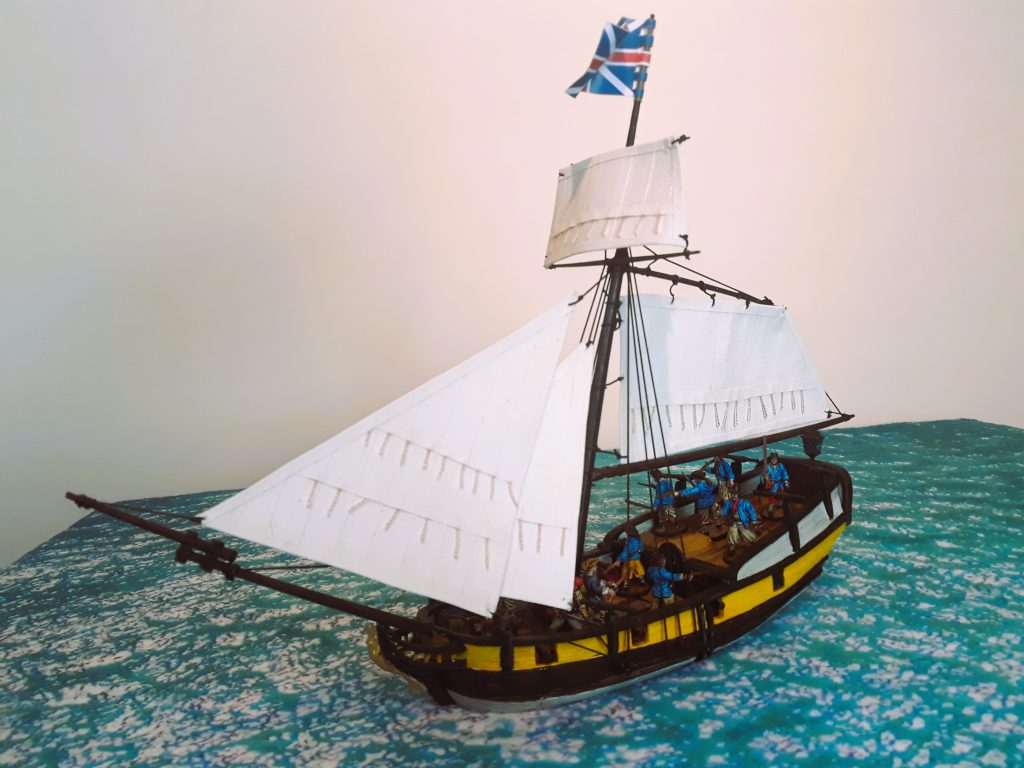
For the Bermuda build I was a bit worried about the top spar of the midden sail, as that seemed a bit flimsy. You can use the gun port covers as well, but make sure you test fit those with some assembled cannon, as it’s a tight fit. Even without paint the assembled model looks great, with lots of detail. The rudder is poseable, and there’s plenty of room to add some detail with other parts if you want. Another tip; if you want to have some cannon poking out the rearmost gunport, you should really assemble and paint these before gluing in the poop deck. This deck doesn’t pop off for gaming purposes, and when you’re assembling the kit it’s one of those deals where you have to do it all at once or you’re scraping primer. You don’t really have to paint the inside, as that’s dark enough.
After priming the assembled kits with some Wraithbone spray, painting was done with contrasts. These work great, as there’s plenty of detail from the wood grain. Painting went really quickly. In hindsight the color of the deck is a bit too bright. I had the fortune to visit two replica ships after painting these up (of course), and the decking is a much more worn and gray affair. You can change up the color of the rigging, on the ratlines for example, but you can also just imagine the crews going wild with the tar on these if you want. After this step, you can technically stop and skip the whole rigging and sails bit. It’ll look good, and it’s perfectly fine if you want to game without those extra steps (I would magnetize the masts in this case).
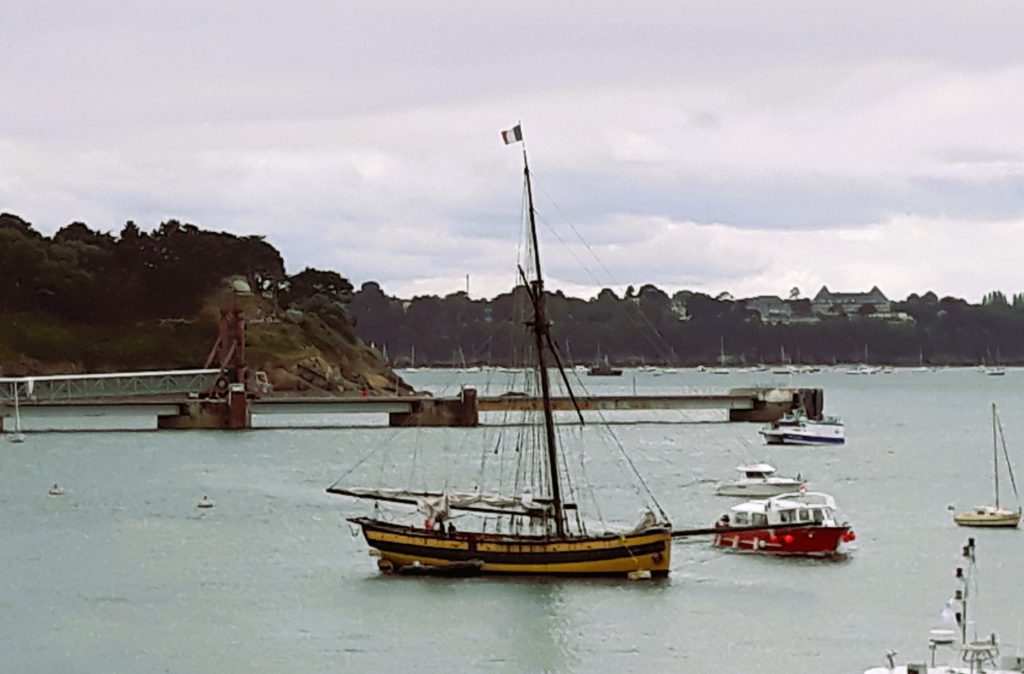
The game is rigged
I wanted to take the next steps and mentally prepared myself to rig stuff. Luckily, Ilor’s amazing guide helped me to plan this out. The big question; do I magnetize the masts or glue them in. Although I do love sticking the magic metal to things, I decided against this for a couple of reasons. One is transport. I won’t be lugging these ships around on airplanes or something like that. Besides, I have to take the car to the club anyway (or carpool) and I use plastic bins or really useful boxes for transport anyway.
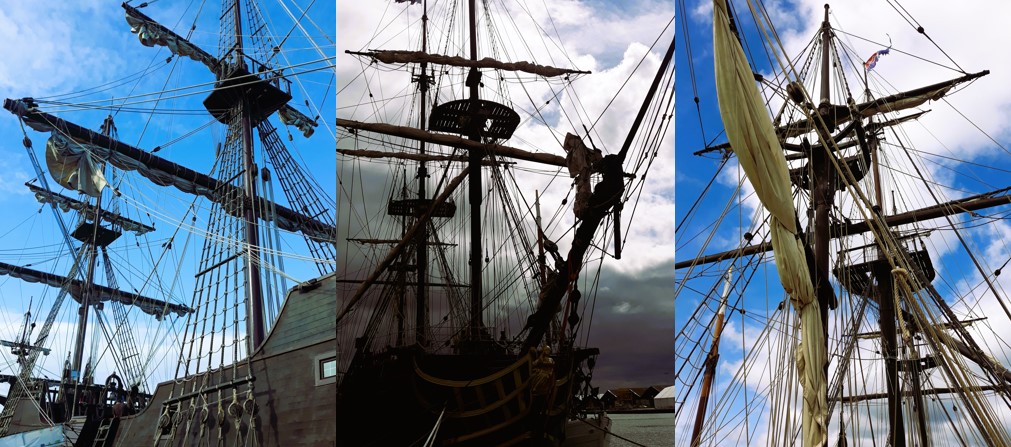
I want to display these as well in my hobby room so I won’t have to figure out a long-term storage solution. The second reason is that the kits are plastic. I was a bit worried some parts might snap due to handling so I just stopped worrying about it and glued the damn things. Time will tell if this was a good or bad decision, but current me doesn’t really care about future me, that’s his problem really. The added bonus is that you can add some extra rigging, just make sure you don’t overdo it, as you want to be able to move your models around without annoying “twang” noises.
Rigging is actually a really nice experience when you see it coming together. Firelock has some handy guides which you can use to spruce up your goose. I mentioned that the top spar on the Bermuda sloop worried me a bit, but after doing the rigging and actually using the lines to give some extra hold (historically correct! I think!), it’s pretty much rock solid. If you want to use the plastic deadeyes provided in the kit, be aware that the standard 0.8mm elastic cord recommended is too big to fit through the holes. I left mine off, giving up a bit of historical authenticity, since I already had some freshly ordered cord.
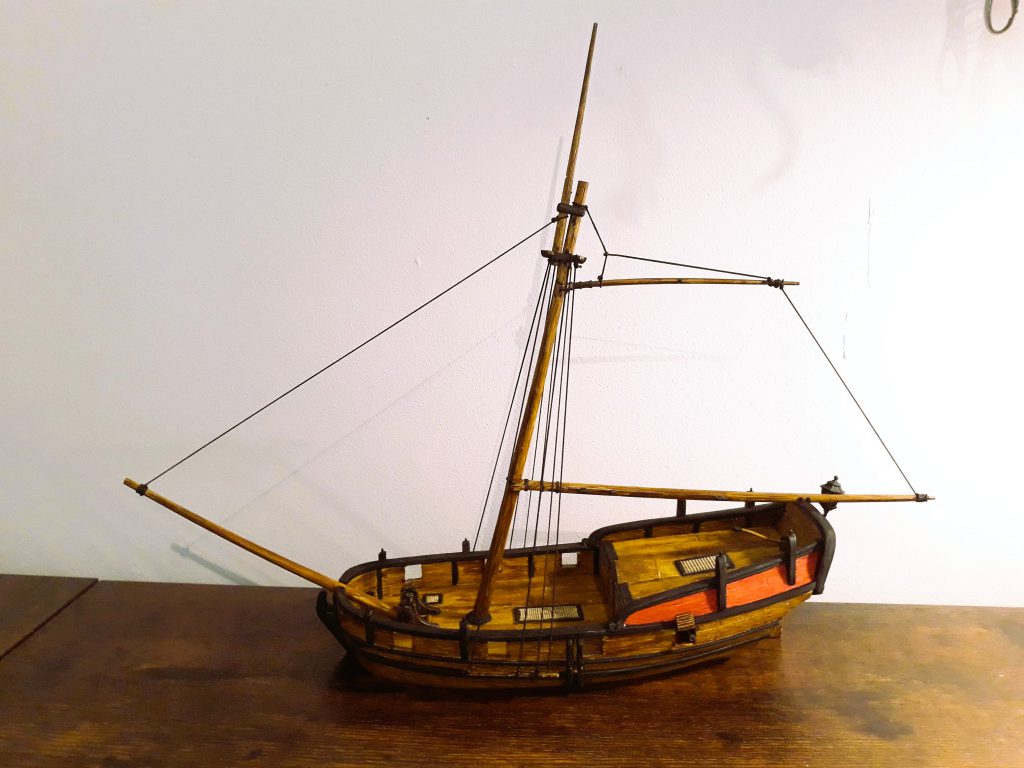
Orinoco flow
Much like Enya, traditional sail making is a thing of the past. And also much like Enya, you can have a bit of a hard time to find stuff about it without getting mixed up with old hippies who tend to dress in tunics. Luckily, Blood & Plunder is a popular game and there are some really good resources specific for the game available. I copied the method from the dead man’s chest blog, which is pretty straightforward. I used loose canvas paper as that felt appropriate, being named canvas after all. Simply cut them into strips and glue them together (Mod Podge matt works fine for this). Use the sail templates provided by Firelock and add some more detail using thin strips and some twine for the reef bands. I’m actually glad I used the canvas as it’s pretty sturdy and confident the lines will not rip through. It’s also a nice off-white. Despite being painters’ canvas, you’ll have a bit of a problem if you want to paint these. Using acrylic paint or washes will not have the effect you want. I haven’t tested it, but I would suggest spray paint, an airbrush or inks to give some color or stain them.
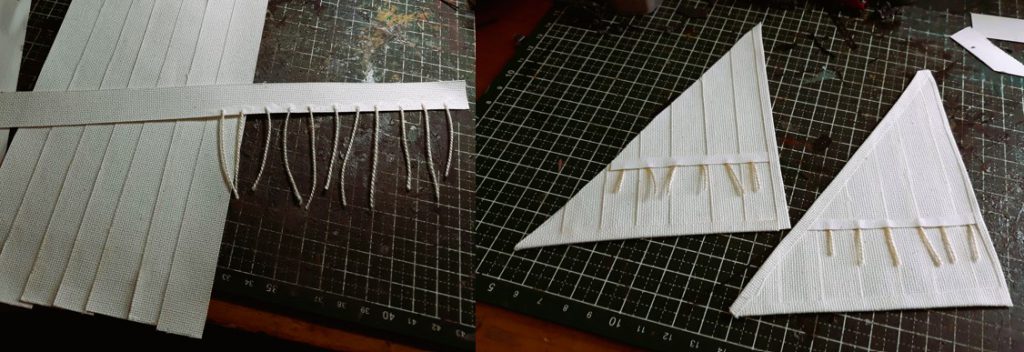
Another tip for the build I discovered; when building make sure the top spar of the mizzen is at a sharper angle than depicted here. The spar fits rather snuggly at a 90° angle, so I didn’t really think about it when assembling. This isn’t that clear from the instructions, and I only noticed this when printing off the sail templates. I was a bit too far with painting to rectify this, but it’s something you want to be aware of. Something else which I discovered and is pretty important: the ships don’t float! Don’t take them with you in the bath, no matter how alluring this may seem! You’ll need to work out something with styrofoam to have them float. Which reminds me that although you’d think the ships are pretty small, they did have a deeper draft than you imagine, and you have at least one deck obscured by the water. I cannot stress enough how nice of a kit this is. It’s easy to put together and paints great. Even with a minimum of rigging and some half-assed sails it will look great on the tabletop.
Timber shiverers
Before bringing out the plastic kits, Firelock used metal for the miniatures and resin (and wooden masts) for the ships. Despite the models being nice, there’s always the common problem of repeat poses inherent to an all metal range, and the higher price point. The plastic kit drastically takes care of both of these things, as you’ll have an abundance of bits left over after assembling every sailor for a very good price. You get four sprues with six models each in the starter, which translates to two sailor boxes. With the sprues provided in the starter you can model up to four minis with blunderbuss and/or grenadoes. I more or less assembled these to get a healthy mix of different profiles, with the standard 4-model unit size in mind.
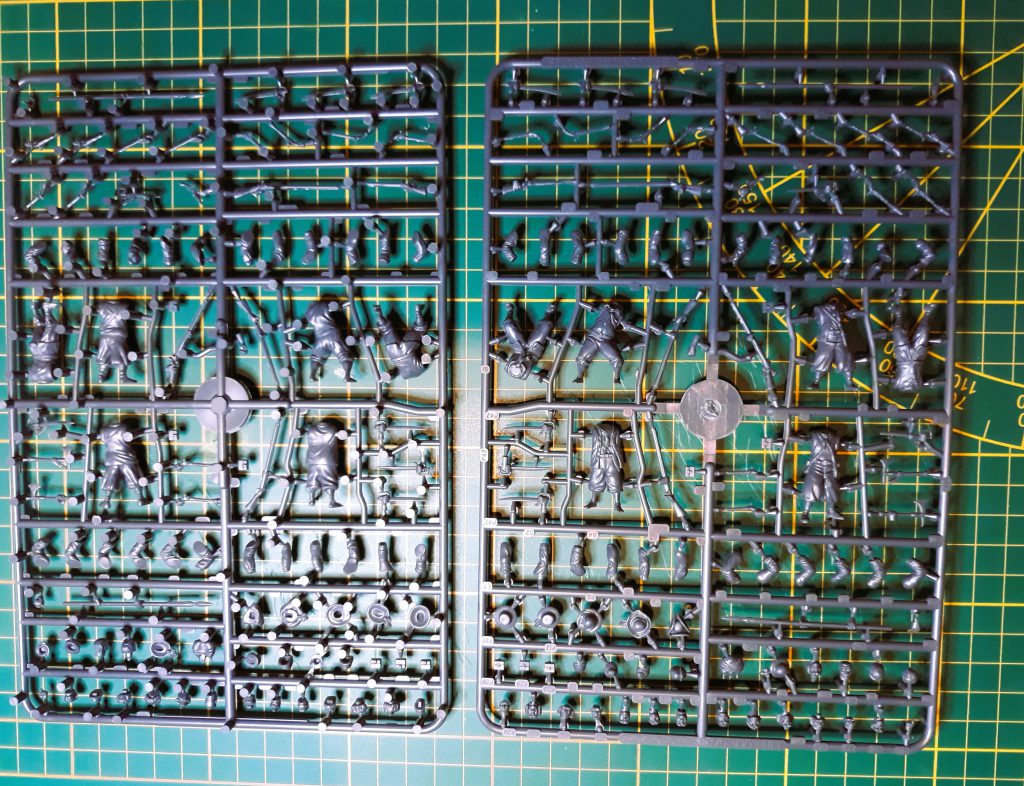
The poses are dynamic, and you can make sure no two models look alike. A load of different head options lets you differentiate even more. The 20mm round bases come with a standard ship deck wood grain texture, but you can of course base them up differently if you only want to fight land battles. As with the ships, contrast paints were used. With the application of a wash or highlight here and there they certainly look the part. You’ll be painting a bunch of white or off-white shirts as was the style at the time. Uniforms weren’t widely used for sailors then, so you can easily use these for different factions if you like. I’m honestly quite impressed by the quality of the models and quantity of the bits. I haven’t gotten my hands on the other plastic boxes Firelock put out, but it looks very promising.
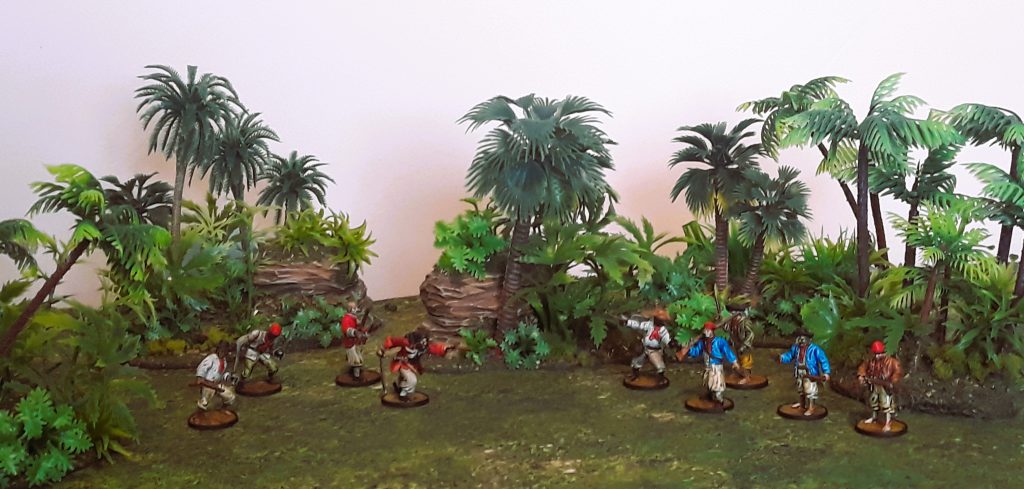
Both your Maynard and Thatch come on a smaller sprue, in dynamic poses. You won’t be able to swap arms with the sailor kit, but you can add extra pistols and swords if that’s your bag. These were painted using the same method as the rest of the crew and they don’t need much to look good.
Plunder
The rest of the components in the box are of good quality. You won’t get the nice status dice available separately, but enough tokens in sturdy cardboard to mark your units. You probably won’t be upgrading these for a while. The double-sided mat is very nice, and you get a cute set of double-sided sea/land terrain as well so you can get started as soon as you assemble your models. Since my heart goes out to all scenery builders in the world, check the Blood and Plunder facebook group or join their Discord channel for some stunning tables that players have made. I do absolutely love that this is included for people who don’t have a lot of space at home to store their stuff, or aren’t that bothered about making a load of scenery.
The card decks you’ll get are not only necessary for playing the game, they look pretty awesome as well. You get a Pirate and English deck made of good cardstock, but I would recommend some clear sleeves because you will be using these intensively. The theme introduced in the cards follows in the ship cards. There is a very clear theme and art direction in general that is simple, nautical and very pretty to look at. I mention this because you only really “see” this when it is not great. The care and dedication put in by the designers is clear and it’s great to see such professionalism across the board. There is no bit that’s not carefully thought out.
It’s actually annoying to review this box since it’s much easier to write a nasty bit if there are obvious flaws! But the fact is that this is one of those hits, a starter that not only means starter, but is also well thought out and a self-contained game in itself. If you don’t want to collect more beyond the box, you can have perfectly satisfactory games. You’ll get the full Blood and Plunder experience, and two ships even. The price is low as well, at $145, this will save you more than $100 to buy all of the different kits separately. If you’re looking in UK/EU stores you’ll find them priced even cheaper than in the States.
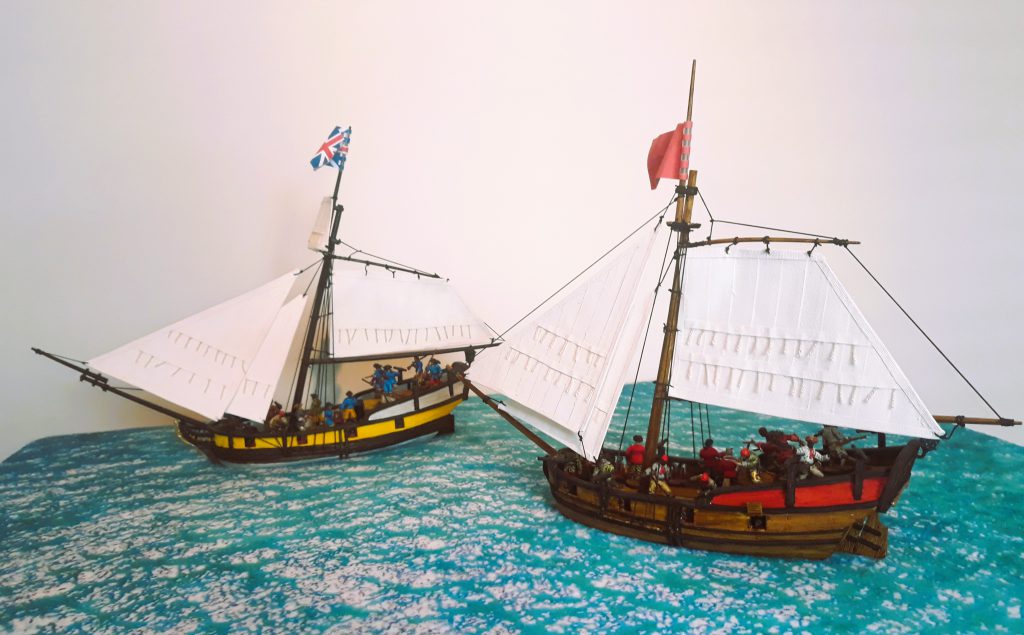
Is this box for me?
If you are interested in a) skirmish games and b) the golden age of piracy, this is a no-brainer. Aside from that, since its inception, Firelock Games has made a continuous effort to promote the game at conventions and through their quartermaster program. By introducing a cheap starter that lets you hit the ground running, now is a very good time to start playing. We’re excited to give this game the coverage it deserves, so watch the horizon for sails and new content.
Questions, comments, suggestions? Want to express your deep and abiding admiration of how damn good Jackie’s ships look? Contact@goonhammer.com, or leave a comment below


